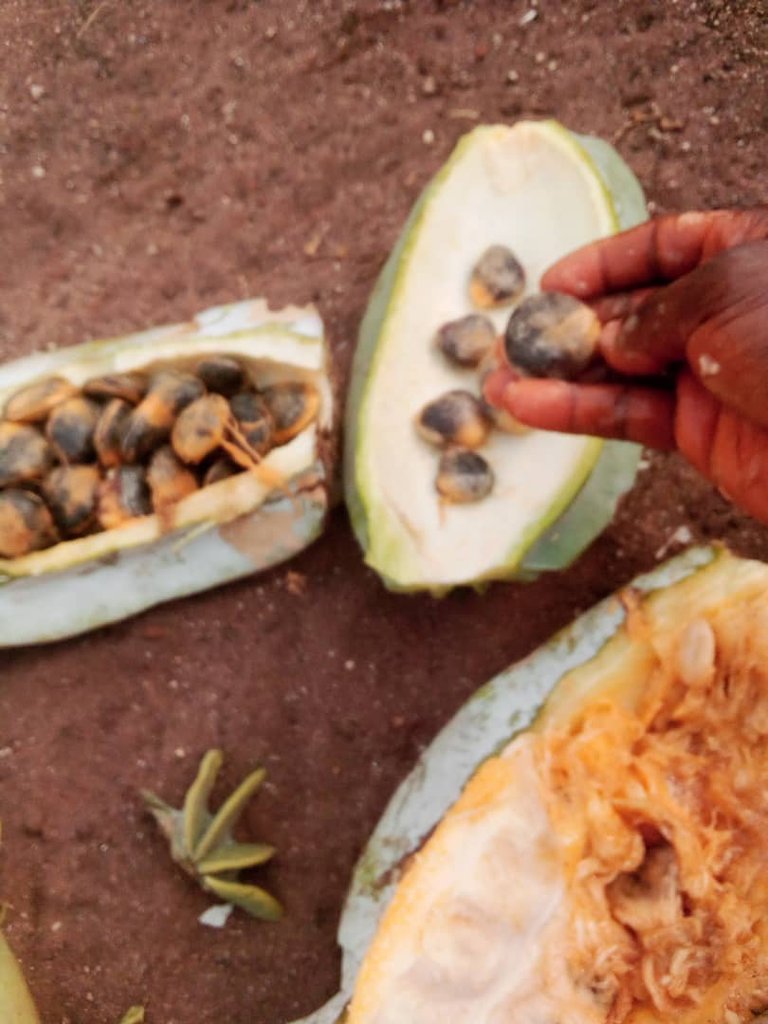From Seed to Harvest: A Guide to Planting and Growing Perfect Pumpkins
Good morning my good people of hive community, i hope we all had a good night rest. I am back today to share my knowledge on How to plant pumpkin seed.

Planting Pumpkin Seeds: A Step-by-Step Guide
Pumpkins are not only quintessential to autumn decor but also versatile in the kitchen, making them a popular choice for home gardeners. Whether you're aiming for a festive Halloween display or planning to whip up some delicious pumpkin pie, growing your own pumpkins can be a rewarding experience. Here's a step-by-step guide on how to plant pumpkin seeds and nurture them into flourishing vines:

1. Selecting the Right Seeds:
- Choose pumpkin seeds suited to your climate and available space. Varieties like Sugar Pie or Jack O'Lantern are popular choices for home gardens.
- Opt for seeds from reputable suppliers or save seeds from a previous successful harvest.
2. Timing and Location:
- Plant pumpkin seeds outdoors after the danger of frost has passed and the soil temperature reaches around 60°F (15°C).
- Select a sunny location with well-draining soil. Pumpkins thrive in full sun, so aim for a spot that receives at least 6-8 hours of sunlight daily.
- Ensure adequate space for vines to sprawl, as some pumpkin varieties can spread over a considerable area.

3. Preparing the Soil:
- Loosen the soil to a depth of at least 12 inches and amend it with organic matter such as compost or aged manure to improve fertility and drainage.
- Aim for a slightly acidic to neutral soil pH level between 6.0 and 7.0, which is ideal for pumpkin growth.
4. Planting the Seeds:
- Create mounds or hills of soil spaced about 4-6 feet apart to accommodate the sprawling nature of pumpkin vines.
- Plant 3-4 seeds per mound at a depth of 1 inch, spacing them evenly apart. If using rows, space them 6-8 feet apart.
5. Watering and Care:
- Keep the soil consistently moist but not waterlogged, especially during the germination and fruit development stages.
- Avoid overhead watering, as wet foliage can promote diseases. Instead, use a soaker hose or drip irrigation to water at the base of the plants.
- Mulch around the base of the plants to conserve moisture, suppress weeds, and regulate soil temperature.
6. Supporting Growth:
- As the vines begin to grow, gently train them away from the main stem to encourage airflow and prevent overcrowding.
- Consider providing support for heavy pumpkins by placing them on straw or wooden boards to prevent direct contact with the soil, which can lead to rot.
7. Pollination:
- Pumpkins have both male and female flowers on the same plant. Bees and other pollinators are essential for transferring pollen between flowers.
- If pollinators are scarce, hand-pollinate by transferring pollen from the male flowers to the female flowers using a small brush or cotton swab.
8. Pest and Disease Management:
- Monitor plants regularly for signs of pests such as squash bugs, cucumber beetles, and powdery mildew.
- Employ natural methods like hand-picking pests, using row covers, or applying organic insecticidal soap or neem oil as needed.

9. Harvesting:
- Harvest pumpkins when they reach full maturity, indicated by a deep, uniform color and hard rind.
- Use a sharp knife or pruning shears to cut pumpkins from the vine, leaving a few inches of stem attached for better storage.
By following these steps, you can successfully plant and grow pumpkin seeds to enjoy a bountiful harvest of vibrant, delicious pumpkins in your own backyard. Whether you're carving jack-o'-lanterns or baking pies, there's nothing quite like the satisfaction of harvesting homegrown pumpkins straight from the vine.
Thank you for stopping by to read my article, i hope you find it so interesting.
@tipu curate
Upvoted 👌 (Mana: 31/41) Liquid rewards.